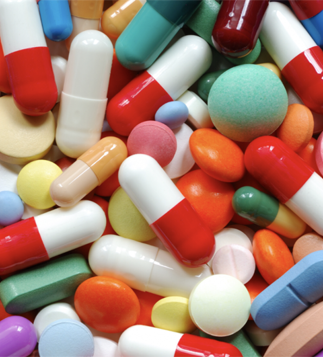Manufacturers Admit 18% of Medications Contain Gluten
 A new report says pills often contain so-called “inactive” ingredients capable of causing allergic or gastrointestinal reactions in small numbers of people sensitive to specific compounds.
A new report says pills often contain so-called “inactive” ingredients capable of causing allergic or gastrointestinal reactions in small numbers of people sensitive to specific compounds.
- Report: Ingredients in drugs can cause allergic reactions 15 Mar 2019 Times Colonist LAURAN NEERGAARD The Associated Press
WASHINGTON — A man with celiac disease felt sicker after starting a new drug, but it wasn’t a typical side-effect. It turns out the pills were mixed with gluten the patient knew to avoid in food — but was surprised to find hiding in medicine.
A new report says pills often contain so-called “inactive” ingredients capable of causing allergic or gastrointestinal reactions in small numbers of people sensitive to specific compounds.
And it’s hard for those patients, or even their doctors, to tell if a pill contains an extra ingredient they should avoid, researchers from the Massachusetts Institute of Technology and Boston’s Brigham and Women’s Hospital said Wednesday. When the doctor sends a prescription, the pharmacist issues whatever the person’s insurance covers — without discussion of inactive ingredients that are buried in the drug’s labeling.
“There’s a tremendous under-appreciation of the potential impact that inactive ingredients may have,” said Dr. Giovanni Traverso, a Brigham gastroenterologist who spurred the research after his celiac patient’s trouble.
Drugs contain an “active ingredient,” what you hope will help your health. Patients may not realize that inactive ingredients make up the rest of the pill, substances that aren’t supposed to directly affect your health. They’re used to make it easier to absorb the drug, or to improve the taste or extend the shelf life.
Most people don’t need to worry about inactive ingredients but the Boston researchers pointed to rare published reports of reactions in patients with allergies or intolerances to certain compounds — and called for more information about who might be at risk.
The study analyzed data on inactive ingredients from a database of more than 42,000 prescription and over-the-counter medicines. An average pill contains eight inactive ingredients, but some contain 20 or more.
Consider that 39 per cent of seniors take at least five prescription medicines daily, and even a small amount can add up, the researchers reported in the journal Science Translational Medicine.
The report found:
- About 45 per cent of the analyzed medications contained lactose. The amounts may be too small for some lactose-intolerant people to notice, but someone taking common drugs for high blood pressure and cholesterol could get about a gram a day.
- A third of medications contained a food dye associated with allergic reactions.
- More than half contained at least one type of sugar that people with irritable bowel syndrome are supposed to avoid.
- In a recent survey, 18 per cent of manufacturers said their medications contain gluten, which can cause severe reactions if patients with celiac disease consume as little as 1.5 milligrams a day. But labels may list only innocuous “starch.”
That’s what happened when a patient of Traverso’s experienced worsening celiac symptoms after using a common stomach acid-blocking drug, omeprazole. Traverso had to call the manufacturer to learn that particular formulation contained starch made from wheat.
Because refills can bring a different company’s formulation, patients should check the label each time, he added.
ORIGINAL STUDY: http://stm.sciencemag.org/content/11/483/eaau6753 (access is limited)












